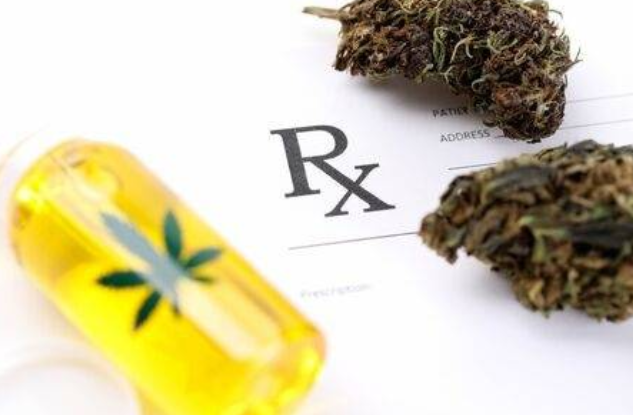If you’re new to using medical marijuana, it’s easy to feel overwhelmed by the vast selection of products in dispensaries and all the various types and forms they take. Fortunately, when you break it down, these variations are not only much easier to understand, they can help you hone in on the right medical marijuana and use of it for your unique body and medical condition.
All medical marijuana products are classified according to certain qualities, each providing information about its relative strength and/or effects, those being:
- Strain
- Form (or Method)
- Dosage
By using the right strains, forms and dosages, you can effectively use medical cannabis to potentially help relieve pain and other symptoms of your qualifying medical condition as well as improve your overall well-being.
Strains
All medical marijuana products you see in a dispensary, from flower to edibles to vape cartridges, have a name. That name indicates its strain. Each strain has its own unique genetics. Certain fundamental aspects of these genetics–namely the strain’s type, cannabinoid content and terpenes–influence how a particular strain affects a person and are, therefore, included on the labels or packaging of any medical marijuana products you’ll find at a dispensary.
Type
Most medical marijuana is one of three types: sativa, indica or a hybrid of the two. While different types affect people differently, anecdotal accounts seem to suggest a common set of effects for most people. Sativa strains tend to have more of a cerebral effect, commonly called a “head high”, and can be more stimulating. Indica strains tend to have more of a physical effect, or a “body high”, and can be more relaxing.
Many people find that a combination of sativa and indica properties works best for them. Hybrid strains, as their name suggests, are blends (or cross-breeds) of sativa and indica strains. They come in different proportions in different strains, such as 70% sativa/30% indica.
Cannabinoids
Cannabinoids are the primary active compounds in medical marijuana. The most common and prevalent of these is THC. Among many other of its effects, THC is the primary cannabinoid responsible for the psychoactive properties, or “high”, attributed to marijuana.
CBD is typically the second-most prevalent cannabinoid in marijuana and provides many similar and other effects attributed to marijuana without the psychoactive effects.
People who wish to use medical marijuana but don’t desire the psychoactive effect can look for products higher in CBD than THC or containing virtually no THC at all.
Other cannabinoids found in much smaller amounts in some medical marijuana strains include CBG and delta-8 or delta-9 THC. But, for the purposes of newcomers to medical marijuana–and, honestly, most users in general–understanding the meanings of the THC and CBD percentages listed on the labels is sufficient.
Terpenes
Terpenes are chemical compounds primarily responsible for the aromatic and flavor properties of marijuana (such as fruity or woody.) They are found in all marijuana in varying types, combinations and amounts.
Besides affecting how marijuana looks, smells and tastes, however, terpenes possess a range of properties including:
- Antifungal
- Antiviral
- Anticancer
- Anti-inflammatory
- Antihyperglycemic
- Antiparasitic
- Antioxidant
- Antimicrobial
It is, therefore, worth noting the terpene content of the medical marijuana you buy, not just for how it will smell and taste but, as with strain type and cannabinoid content, how it will affect you.
Forms
Every strain of medical marijuana can be processed into different forms, each with its own advantages. In some cases, however, which form you choose can come down to personal preference.
Flower
The unprocessed form of medical marijuana, these are the actual flower buds plucked from the plant, then dried and cured. To consume flower, you can either smoke it, vaporize it or process it into some other form. The effects of smoking or vaporizing flower are generally felt instantly but not as long-lasting as from other forms.
Edibles
People who don’t want to inhale cannabis flower, whether as smoke or vapor, can eat it instead to similar effect. Edibles you’ll commonly find in dispensaries include:
- Gummies
- Chocolates
- Baked goods (cookies, muffins, etc.)
Edibles take longer than flower to take effect, but once they do, can last much longer.
Concentrate
A cannabis concentrate is an extract of only the active ingredients, ie. the cannabinoids and terpenes, from the cannabis flower. This concentrate can then be made into different forms for consumption, such as (but not limited to):
- Tinctures
- Dabs
- Oils for vape cartridges
- Topical applications, like creams and lotions
All forms of cannabis besides flower and edibles fall into this category.
Tips on Using Cannabis Safely and Effectively
Now that you know how to distinguish the different kinds of medical marijuana on the market, you can start figuring out the right kind, method and dosage for you. Here’s a bit of help with that.
Consult With Your Doctor
Always consult with a doctor before using marijuana or making any changes to the type, dosage or method you use. Consult with your doctor as well if you notice any undesirable effects or negative changes in your qualifying medical condition while using medical marijuana. Such effects may simply mean you need to change the type, dosage or method you’re using.
Start Small
If you’re new to using medical marijuana, or to a particular strain or form, start with a low dose, and wait to see how it affects you. If you find you need more to achieve your desired effects, only take a small amount more. Slowly and incrementally increase–or decrease–your dosage over time to determine the right dosage for you.
Monitor Yourself
Keep track of how your cannabis use is affecting you. Not only will this help you determine the strains and forms you prefer most; it will also help you determine the dosage of each of these that works best for you.
Get (and Renew) Your Medical Marijuana Card Online
Visiting a doctor in person is not only expensive and time-consuming; these days, it can also be dangerous for your health. If you’re already dealing with a debilitating medical condition, then that risk only worsens. Today, it’s easier than ever to get a medical marijuana card online thanks to Ohio’s legalization of telehealth for medical marijuana evaluations.
To get or renew your Ohio medical marijuana card, sign up at mmjcard4less.com. After providing some basic contact information, proof of Ohio residency and your qualifying medical condition, you’ll be put in touch with a licensed doctor with CTR (certified-to-recommend) status in Ohio. You’ll meet with this doctor over video call and, pending the doctor’s determination that you qualify, get the recommendation you need for your medical marijuana card.
Once you pay the mmjcard4less fee of only $99, the doctor will submit your recommendation to the Ohio Board of Pharmacy. Shortly thereafter, the Ohio Medical Marijuana Control Program will contact you via email to complete your application and Patient Registry profile and pay the fee for your card. Shortly after that, you’ll receive your Ohio medical marijuana card, again via email, permitting you to begin purchasing, possessing and using medical marijuana legally in Ohio.


